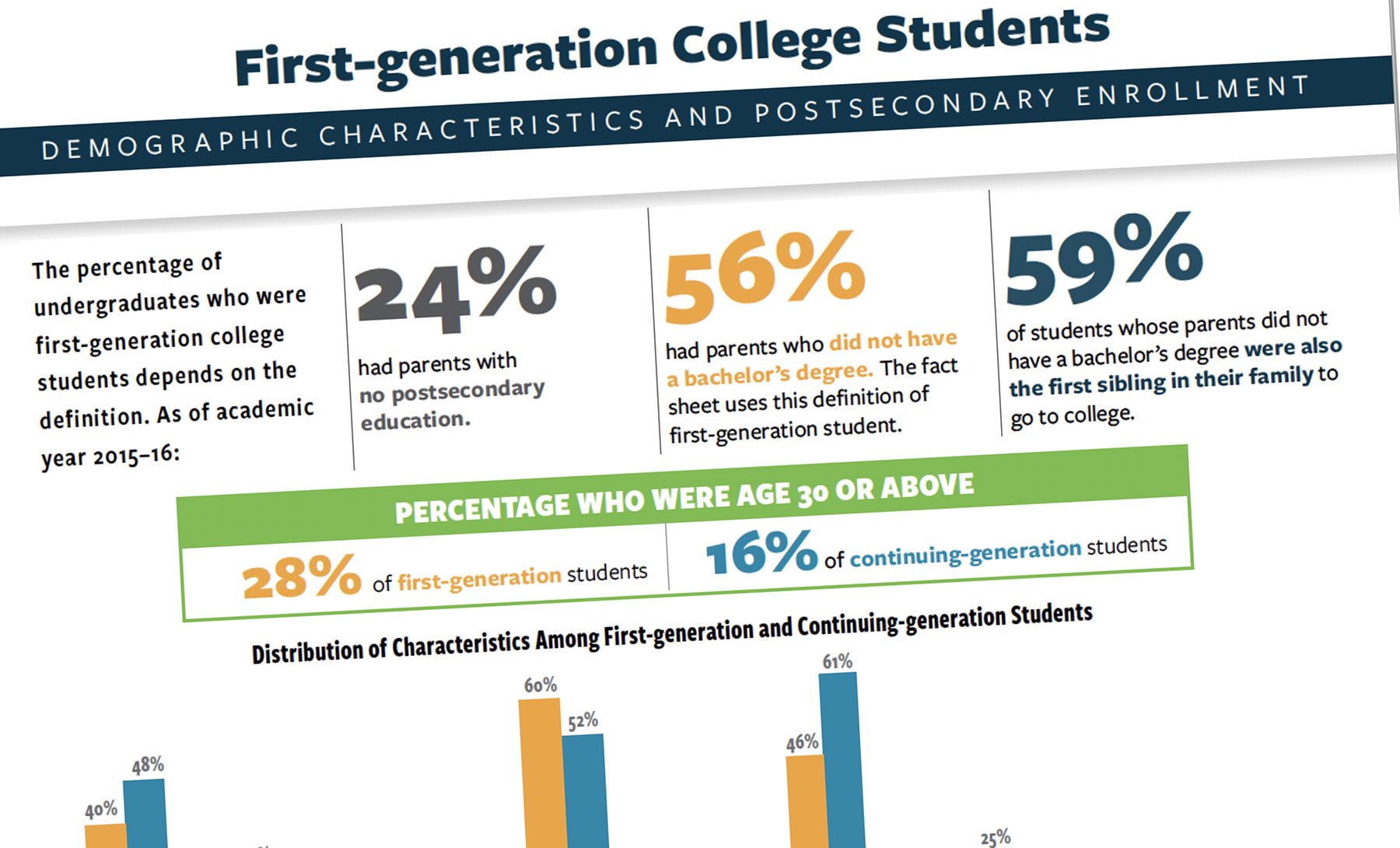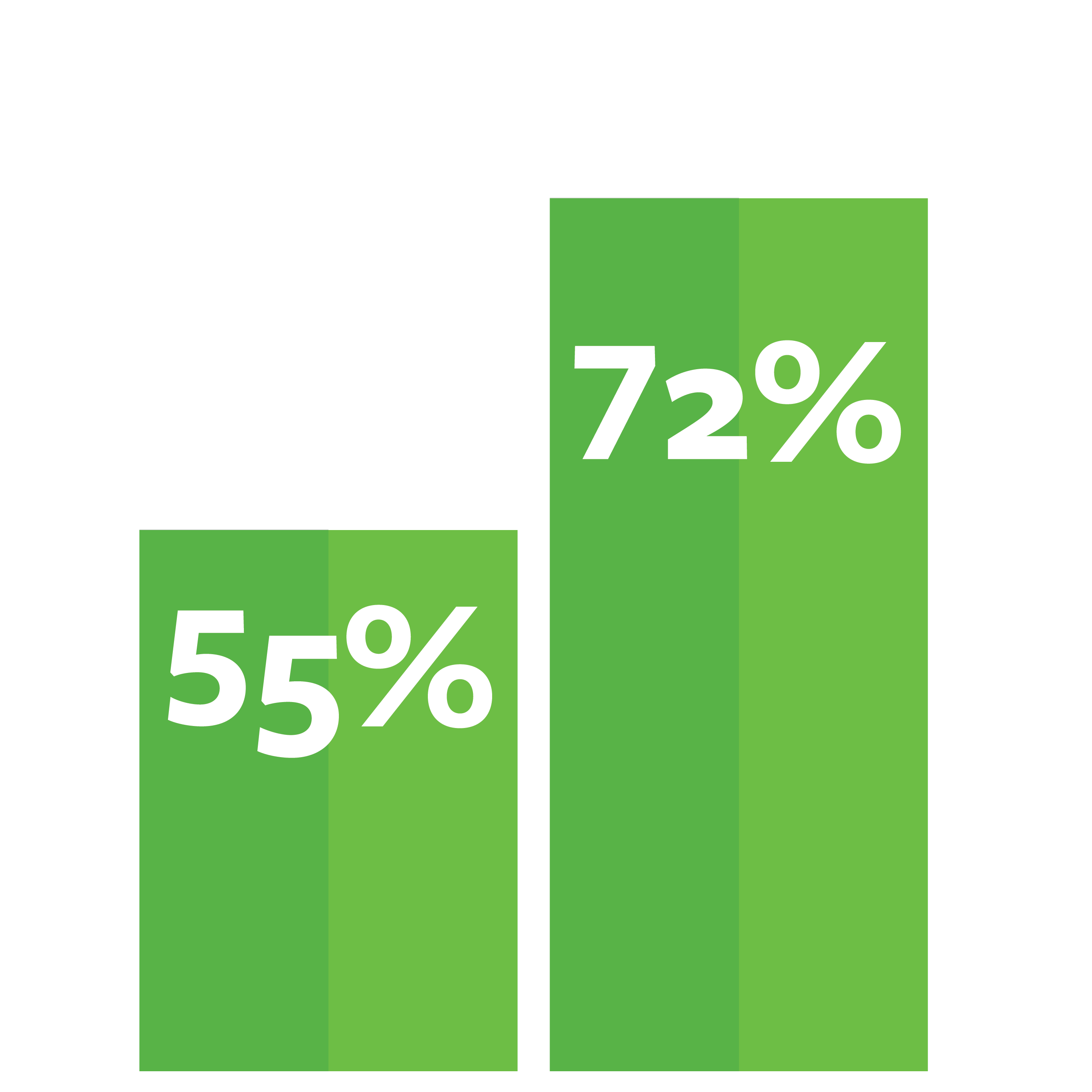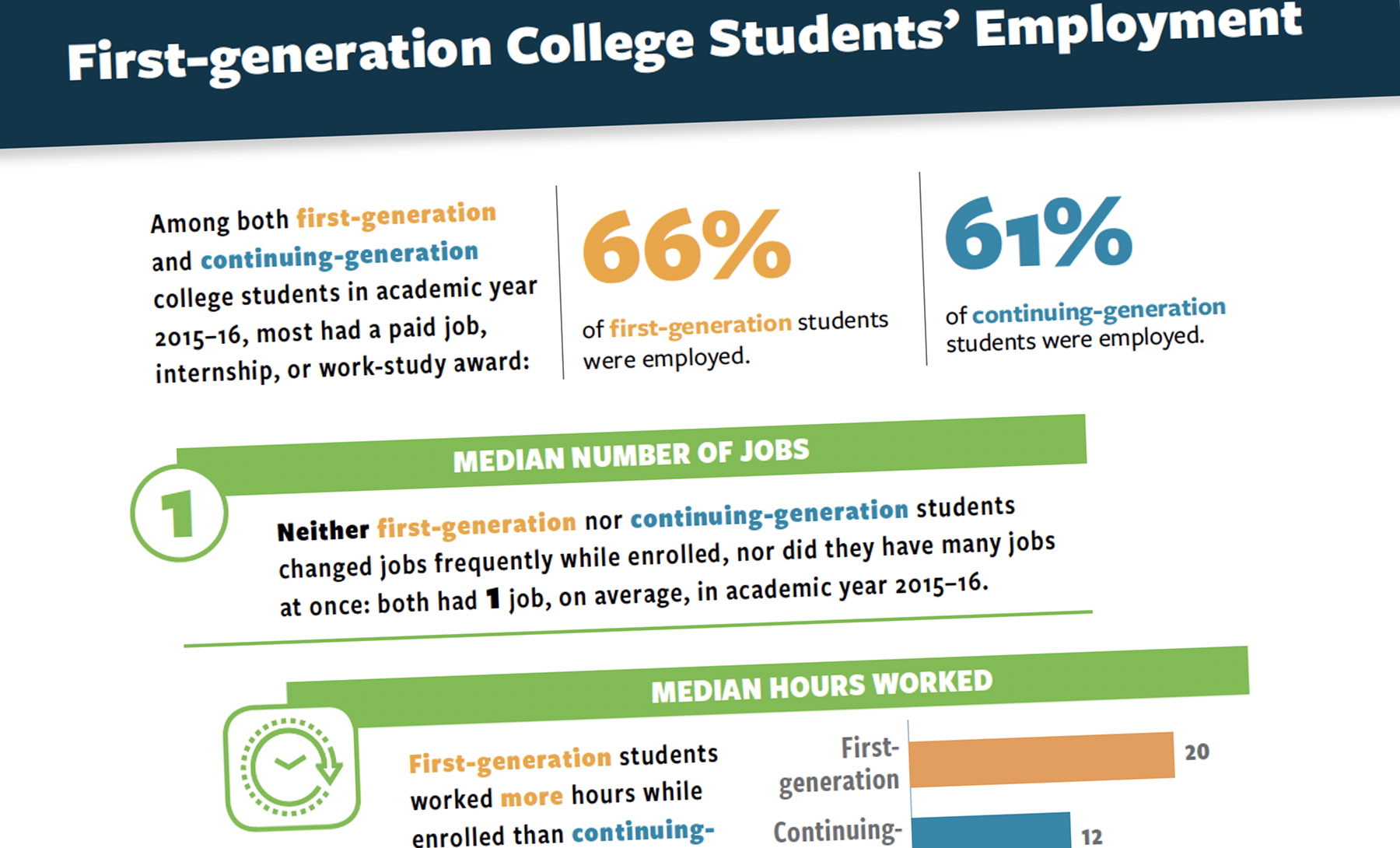National Data Fact Sheets on First-generation College Students
These fact sheets provide national statistics about the background characteristics, postsecondary experiences, and outcomes of first-generation and continuing-generation college students in the United States. Detailed information on data collection methods is included with each fact sheet. Scholars and practitioners are encouraged to use these fact sheets to compare national statistics about first-generation students to statistics about first-generation students at their own institution. These fact sheets also provide useful insight to advance research and scholarship specific to first-generation students.
When considering how the statistics in these fact sheets may relate to the students at your institution, please read the footnotes for important information, including definitions of key terms, the data source, and the type of student population that is represented on each sheet. The average profile of students at your institution may be very different from the national samples of undergraduates and first-time college students used for these fact sheets. Some statistics are shown separately by type of institution.
Note that while the Center recognizes the diversity of definitions represented by the term “first-generation college student,” in these fact sheets, first-generation college student is defined as an undergraduate whose parents do not have a bachelor’s degree.
These fact sheets were produced for the Center by RTI International, an independent, nonprofit research institute. Accompanying each fact sheet is the respective suggested citation.
These are accompanied by the National Data Fact Sheets released in 2021 about first-generation and continuing-generation college graduates.





















